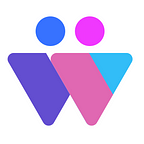How the Resume Has Evolved Over Time
The resume has come a long way since its humble beginnings. What started as a simple list of qualifications and experience has morphed into a complex document that can make or break a job seeker’s chances of landing their dream job. With the ever-changing landscape of the workforce, it’s important to stay up-to-date on the latest resume trends. Here’s a look at how the resume has evolved over time.
How the resume has evolved over time to become the key tool in the hiring process
For centuries there has always been some form of credentialing but the Resume as we know it today can be traced back to as far as 1482 when Leonardo da Vinci wrote a form of a ‘letter’ to a potential employer. For the next hundreds of years, this form of letter became common as ways to describe ourselves, our skills, past employment histories and has evolved into our modern-day digital profiles and resumes.
1920s-1970s: The typewritten resume begins to become more popular
The 1920s saw the typewritten resume become more popular as many people started working in an office setting and out of factories as we discuss later. This allowed for more people to have a single document that outlined their qualifications and experience.
1970s-1990s: The electronic resume enters as the digital era kicks off.
The 1970s saw the electronic resume become more popular as employers started to use computers more. This allowed for people to have a resume that was easy to store and manage.
1990s-present: The resume becomes a key tool in the hiring process. We’re starting to see personal details including age, gender, weight, race, marital status, and other personal details removed from resumes as a way to reduce biases.
The 1990s saw the resume become a key tool in the hiring process as technology started to change. This allowed for people to have a document that was easy to access and to show their qualifications and experience.
The 2000s saw the use of social media as a way to market yourself. This allowed for people to have a more interactive resume where they could include links to their online profiles as companies are looking for culture fit and personality testing over just credentialing found on resumes.
The 2010s have seen the use of apps such as ResumeBuilder to help people create more personalized resumes. Since then, the use of AI has been used to enhance resumes with formatting, impact words specific for each individual role, using AI to send out resumes to relevant job openings, and also for employers to sort through applicants resumes by targeting keywords and relevance.
Predicting the Future of the Resume
AI continues to enhance resumes and resume sorting for employers. We’re now seeing new technologies like blockchain trickle into the hiring process, with use-cases like ‘on-chain credentialing’ and avatars starting to be tested.
Instead of carefully formatted resumes, we can see a future where your education, certifications, and experiences would be linked to your decentralized digital identity and can help companies speed up the hiring process and have access to a more global workforce.
Another shift in resumes is coming out of DAO’s (Decentralized Autonomous Organizations), which can wipe out resumes entirely as talent would join a project or full time role instantly, start working, and get paid based on outputs.
During the Industrial Revolution, men, women and children would show up by the hundreds each morning and just get to work, sometimes 16 hours per day.
Since resumes were not required, and no way to really verify anyone, there were also no regulations on workplace conditions, injury, limitations on hours, age, etc. Old time factory labor ironically feels very similar to modern day DAO’s. But this will continue to improve as projects fail, succeed, and we learn more about successful hiring processes and work conditions.
The future could be more time + skill over education + experience (+ location). As we saw the 2000s bring in social media to our resumes to give companies a better idea of the culture fit, the future may be completely anonymous where you are part of a company for 5 years that grew from 10 members to a 5000 member unicorn, and nobody has ever seen each others face or know their real names.
We’re still early when it comes to on-chain verification or the success of working at DAO’s without the use of any resumes. But there are definite shifts happening with how we could completely change the centuries old traditional hiring processes with new technologies in blockchain and AI.
